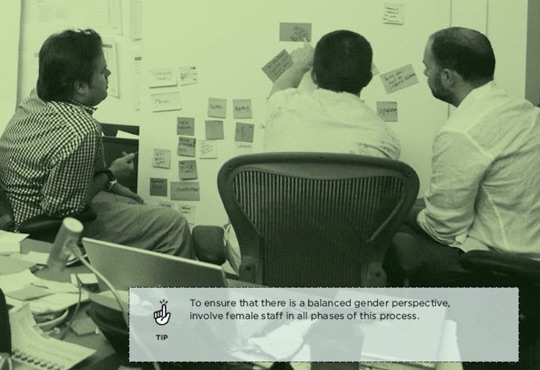Does UX research attract more women than men?
I sometimes refer to the various roles within UX as running along a spectrum from research at one end to design at the other. It might be more convenient than realistic, but I’ve found it’s a pretty solid metaphor when asking colleagues where along the spectrum their deep skill-set lies or where they have the most fun.
…but I’d never considered each end of the spectrum might attract a different gender.
In fact, after moving from earlier careers of men and machines, I’ve enjoyed working in what’s seemed like a gender-balanced environment of UX / user centred design. I’ve even spoken out before on this when I’ve felt things weren’t quite representative.

Top Tip from IDEO’s (Hu)man Centred Design Toolkit. (2009)
So last month when speaking about visualising design research to audiences in New York and San Francisco I was surprised to notice men were significantly out-numbered by women.
In one talk there was only one man in an audience of dozens,
Another talk, only two men.
This made me wonder… was this representative of the profession?
This job ad for a design researcher at an agency in Minneapolis seems to suggest so…

In this ‘People understanding company’ in Europe, women outnumber men two to one.
https://www.happythinkingpeople.com/the-team/
… and a LinkedIn search seems to think so too:
A search for ‘design researcher’ in the SF Bay Area returns 26 women and 4 men in the first 30 results.
So, if there is a pattern like the rudimentary graph above…
- Why is this?
- What is it about the profession, that attracts more women than men?
- Is it that women are somehow suited to design research? Why is that?
- Has it always been this way, or is it changing?
- What does it say about the other end of the spectrum?
And – on a professionally embarrassing note – how did I miss such a fundamental demographic trend in my own industry, given that spotting patterns in people is a core part of my work?
Perhaps some of you lovely men AND women readers can answer some of these curly questions?

